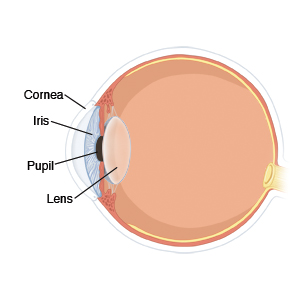Corneal disorders
What is Corneal disorders ?
If we think about the eye as a camera, the cornea would be the glass at the front of the camera lens. The cornea is not only a clear window through which light passes on its way into the eye, it provides most of the focusing power in the eye as well. Corneal disease is a serious condition that can cause clouding, distortion, scarring and eventually blindness. There are many types of corneal disease. The three major types are keratoconus, Fuchs’ endothelial dystrophy and bullous keratopathy.

Symptoms
- With keratoconus, as the cornea protrudes or steepens, vision becomes increasingly blurred and contact lens wear, which is often an early treatment for the disease, becomes difficult. The contact lens may not stay on the eye due to the irregular shape of the cornea.
- A person with Fuchs’ endothelial dystrophy or bullous keratopathy may first notice glare with lights at night or in bright sunlight. As these conditions progress, vision may be foggy or blurry in the morning and clear up as the day progresses. As the diseases further progress, vision will stay blurrier later into the day and eventually may not clear at all.
Causes
- Infection: Bacterial, fungal and viral infections are common causes of corneal damage.
- The cause of keratoconus in most patients is unknown.
- Age: Aging processes can affect the clarity and health of the cornea.
- Cataract and intraocular lens implant surgery: Bullous keratopathy occurs in a very small percentage of patients following these procedures.
- Heredity
- Contact lenses
- Eye trauma
